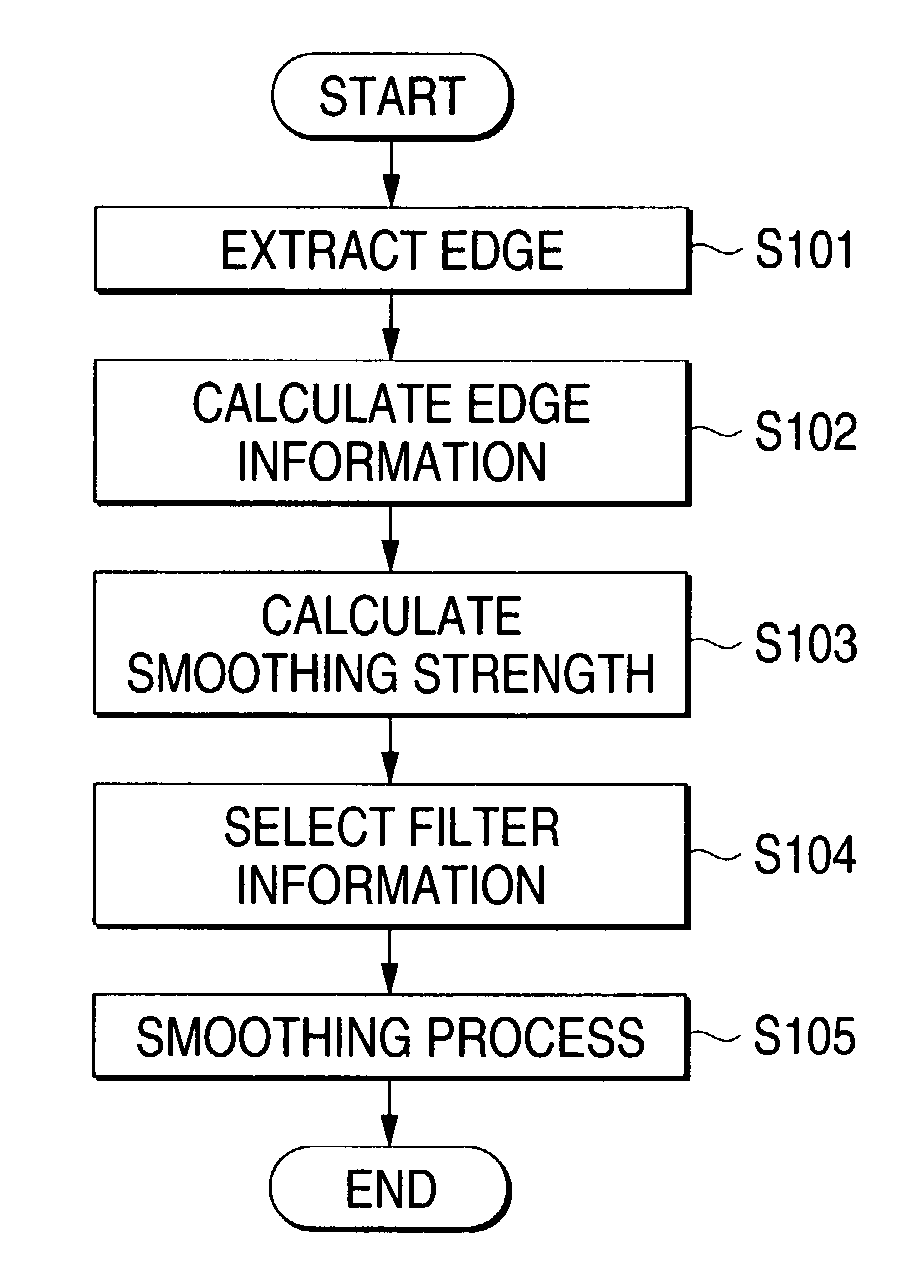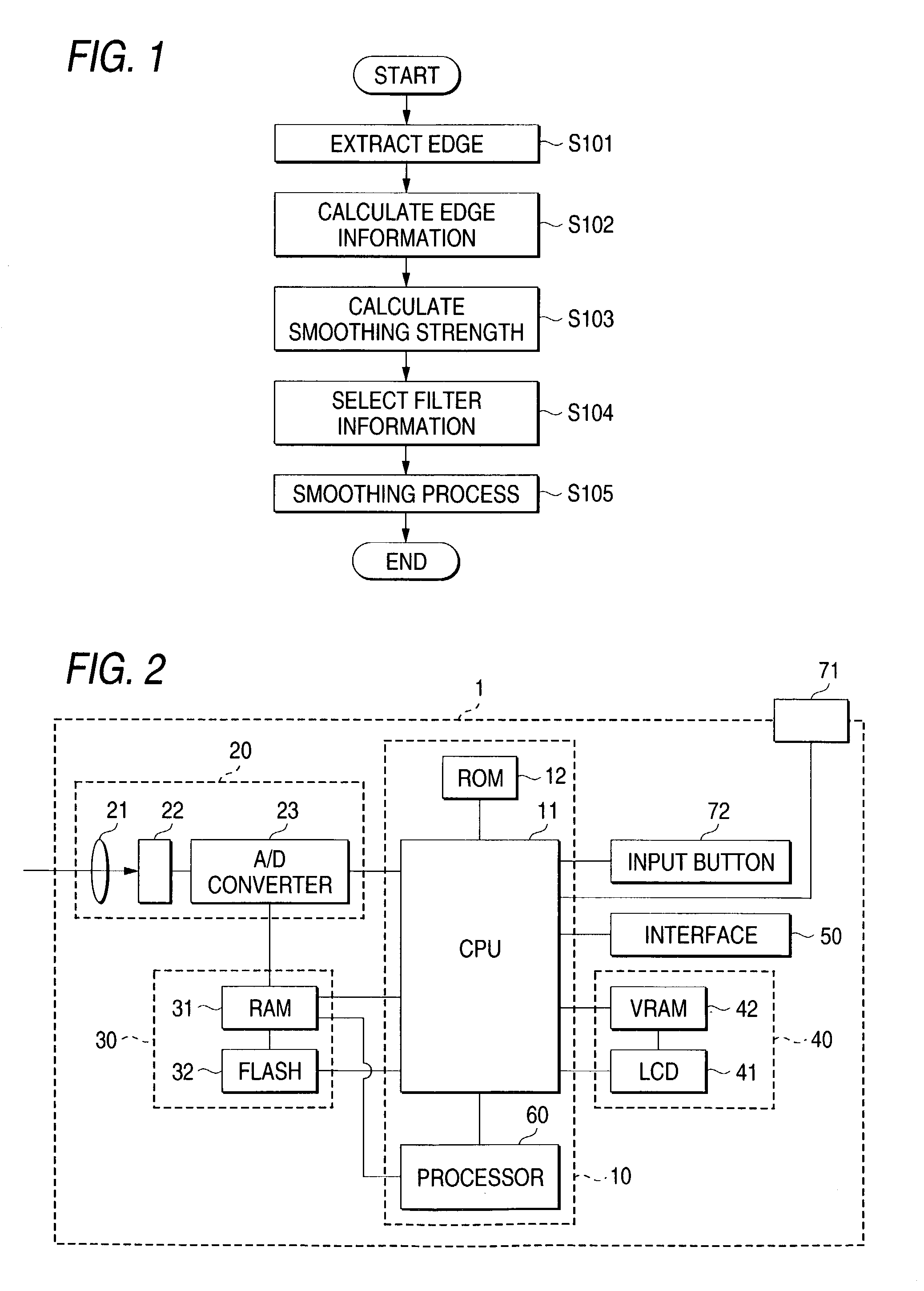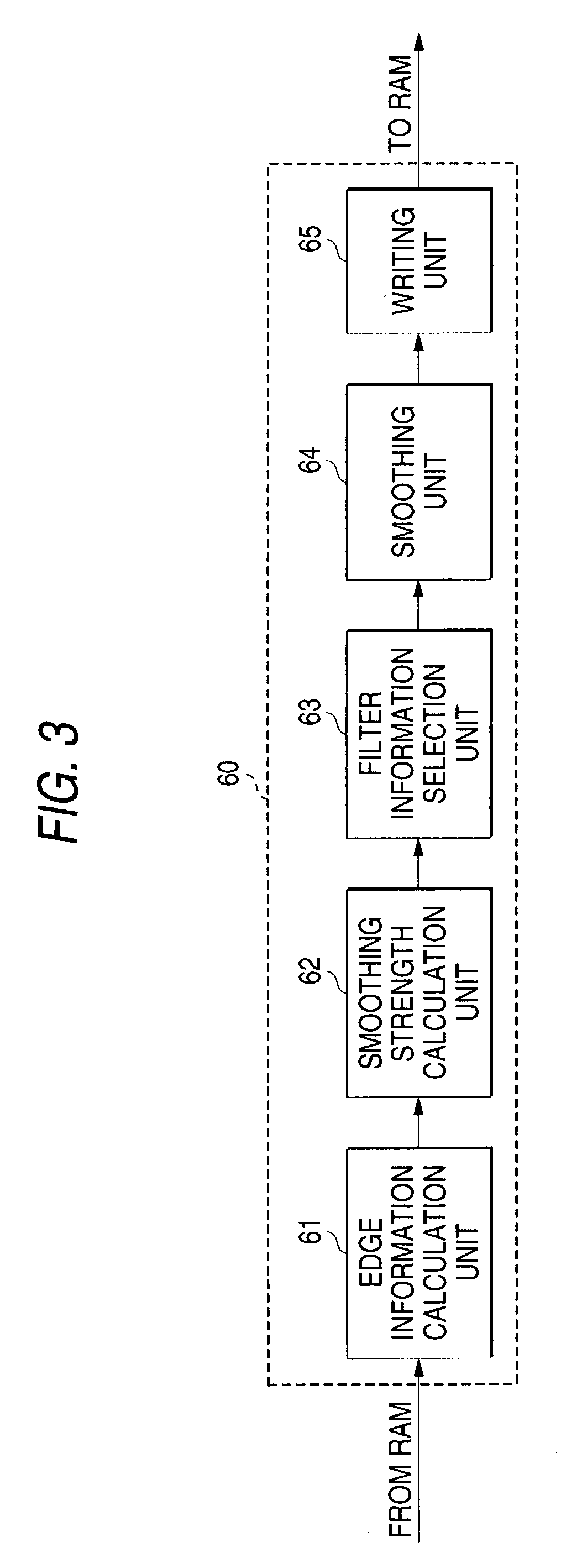Image processing apparatus and recording medium, and image processing apparatus
- Summary
- Abstract
- Description
- Claims
- Application Information
AI Technical Summary
Benefits of technology
Problems solved by technology
Method used
Image
Examples
first embodiment
[0068]FIG. 2 is a diagram showing a digital camera 1 for which an image processing apparatus according to a first embodiment of the present invention is applied.
[0069]As is shown in FIG. 2, the digital camera 1 comprises: a controller 10, an image input unit 20, a recording unit 30, a display unit 40 and an interface 50.
[0070]The controller 10 is an electric circuit for processing digital data output by the image input unit 20. The controller 10 includes a CPU (Central Processing Unit) 11, a ROM (Read Only Memory) 12 and a processor 60. In the ROM 12, a computer program is recorded that is executed by the CPU 11 and the processor 60 of the controller 10.
[0071]As is shown in FIG. 3, the processor 60 includes an edge information calculation unit 61, a filter information selection unit 63, a smoothing unit 64 and a writing unit 65.
[0072]As is shown in FIG. 2, an input unit for receiving an entry from a user is connected to the controller 10. The input unit includes a shutter button 71 ...
second embodiment
[0128]A processor 100 for a digital camera according to a second embodiment of the present invention will now be described while referring to FIGS. 10 and 11. No explanation will be given for components and processing that are substantially the same as those in the first embodiment.
[0129]The second embodiment differs from the first embodiment in that filter information is generated each time the grade grad of the slope of the edge and the direction θg of the slope, both of which constitute the edge information.
[0130]As is shown in FIG. 11, the processor 100 for the digital camera in the second embodiment comprises: an edge information calculation unit 101, a smoothing strength calculation unit 102, a filter information generation unit 103, a smoothing unit 104 and writing unit 105.
[0131]The edge information calculation unit 101 and the smoothing strength calculation unit 102 are the same as those in the first embodiment. The filter information generation unit 103 generates filter in...
PUM
 Login to View More
Login to View More Abstract
Description
Claims
Application Information
 Login to View More
Login to View More - R&D
- Intellectual Property
- Life Sciences
- Materials
- Tech Scout
- Unparalleled Data Quality
- Higher Quality Content
- 60% Fewer Hallucinations
Browse by: Latest US Patents, China's latest patents, Technical Efficacy Thesaurus, Application Domain, Technology Topic, Popular Technical Reports.
© 2025 PatSnap. All rights reserved.Legal|Privacy policy|Modern Slavery Act Transparency Statement|Sitemap|About US| Contact US: help@patsnap.com



